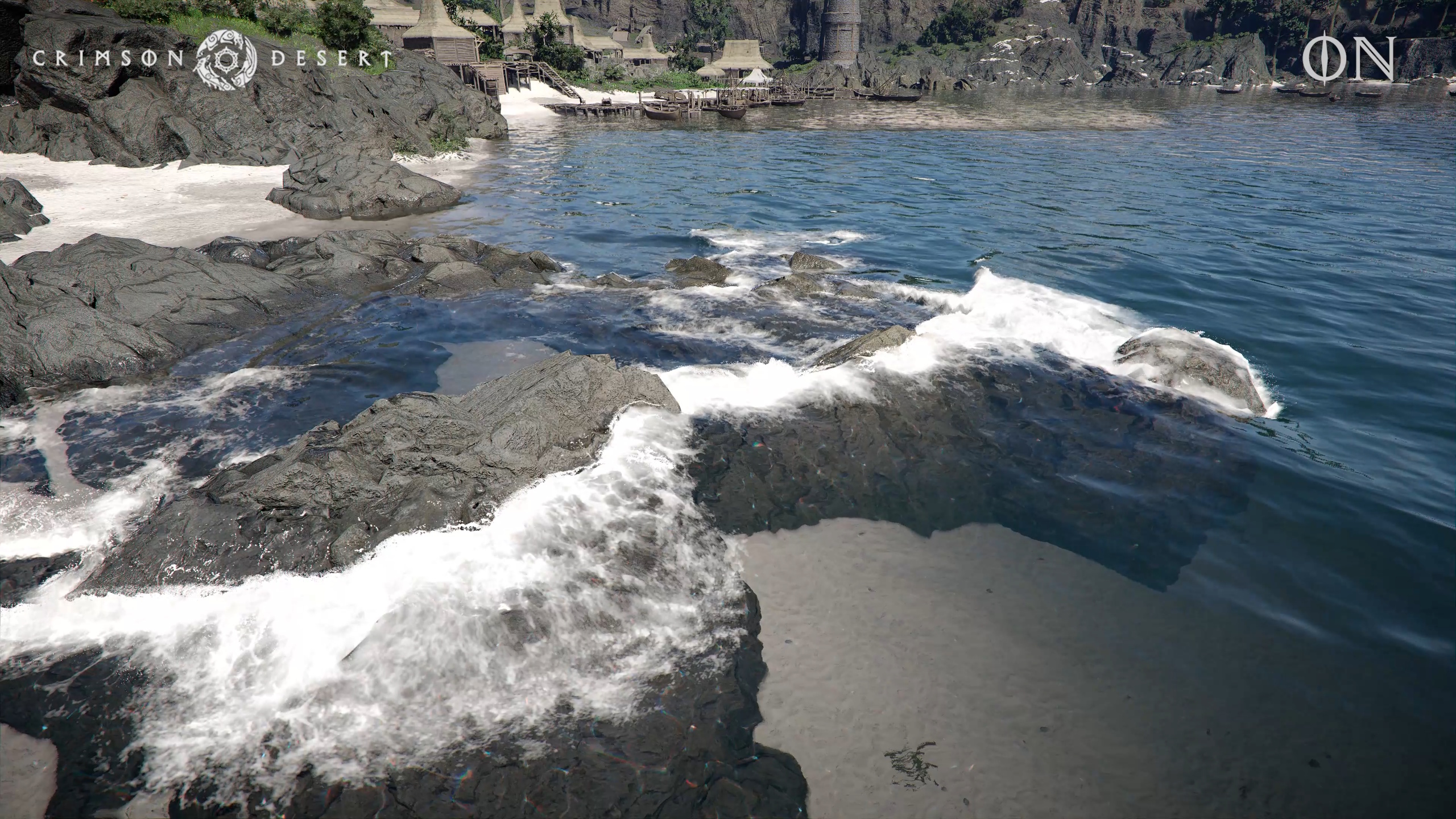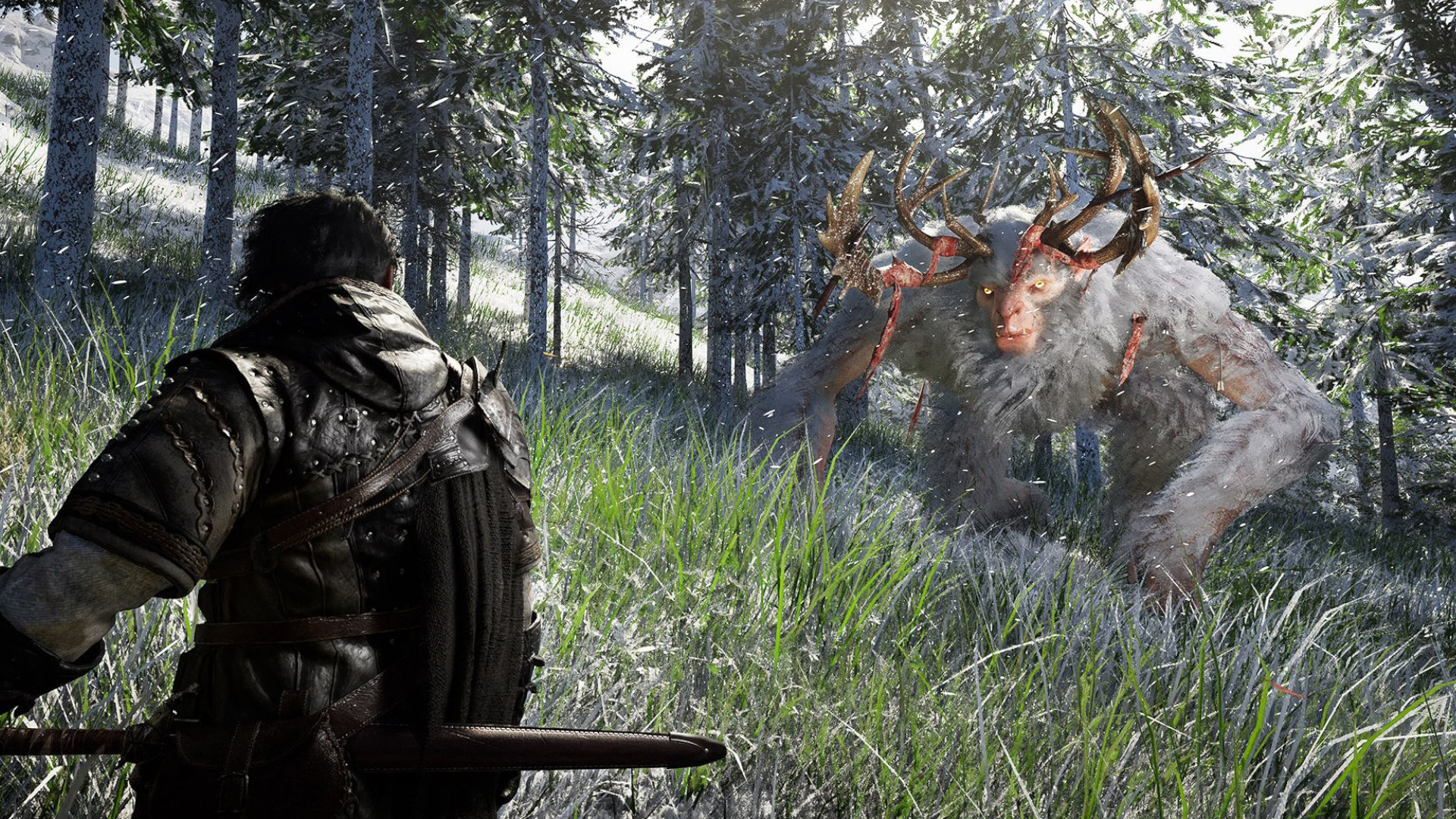
I've sat through a lot of tech demos in my career. One that still lives in my head, an absolute classic of the form, is an old Uncharted showcase that Sony trotted out back when we were still wowed by video game water that looked mostly like water rather than freshly microwaved aloe vera gel. And if Nathan Drake fell into this distinctly watery water, you could watch his clothes dry in real-time. You obviously wouldn't because you'd be too busy playing a video game, not stalking tech features, but the tech was there and Nate's sweater was wet. Truly, video games had peaked.
I had this demo in the back of my mind during a recent appointment with Pearl Abyss, which came to GDC 2025 to showcase its BlackSpace Engine, the proprietary open-world game-making tech and tools behind more than just the upcoming RPG Crimson Desert, which was the vehicle for the showcase. In the best way, it felt like an hour-long tour of a sausage factory, but instead of sheep knees or pig lungs or whatever sausages are made of, I saw wind vectors and hurtboxes and physics toggles.
We don't see stuff like this very often, which is a shame. It was fascinating and refreshing. Elemental reactions, time lapses, NPC pathing, torch illumination – real nitty-gritty stuff. And, also and especially, water. Water that looked a whole lot like water, and even more watery with water tech called Shallow Water enabled. Water that could selectively dampen your horse's legs, for example, or, when struck with ice magic, conjure and fracture ice and send it drifting lazily downstream, colliding with rocks and piling up in little crystalline nests.
The entire point of this showcase was to be ridiculously detailed, and this water planted a ridiculously detailed question in my head. I obviously stay on top of all the hot new releases and cutting-edge graphics tech going around – how about that Balatro, huh – but this shiny new engine felt like a good opportunity to measure 2025's video game progress against the Nathan Drake Sweater Gradient. The NDSG, we in the business call it. I had to know.

Here is the question that I inflicted on the nice Pearl Abyss engine developers who were gracious enough to humor me all the way from Korea: if my character lands face-down in a shallow river and uses his hands to catch himself, when I stand up, will my back still be dry?
The answer, conveyed via interpreter after quite some discussion, started simply. "As for the partial wetness, only the arm part would be wet," the team responded. "The back and cloak would be dry. We've distinguished the parts of the body so that when there's partial wetness, it can be distinctively wet. The wetness is distinguishable."
"The wetness is distinguishable" isn't exactly a back-of-the-Uncharted-box blurb, but it's exactly the kind of blunt summary that I came to hear. But I was secretly a little disappointed. Not by the water. It was, as we've established, watery. It is, I can't stress enough, very pretty and pretty cool, and now it's bonafide distinctive. But sometimes when you're watching somebody make sausage, you want to see a casing rip just to see how they get things back on track.
Well reader, a PR shepherd cut into our conversation, and the casing ripped.
Is this partial wetness game-specific or engine-specific? This type of question came up a few times throughout the demo, but one staff member was on my side here, reckoning this water is more about the tech piloting it. They also reckoned that individual polygons can have different features applied to them, and I'd fully handed them the wheel by this point, content to sit back and watch a team of about seven development staff crosstalk like we're in a NASA command room and there's a cat on the launch pad. This question took several minutes in total to get through. The wetness isn't just by item, then, but by polygon, or by partial sections of items within the engine?
"Let me just make a correction," the final record reads. "It's not polygons or parts, it's neither of them. It's a volumetric masking feature."
There you have it. The wetness is distinguishable because it's a volumetric masking feature, so my back would stay dry. Oh yeah, I'm gonna push this right up the NDSG.
Crimson Desert feels like Dragon’s Dogma 2 combined with The Witcher 3’s lone hero action swagger.







